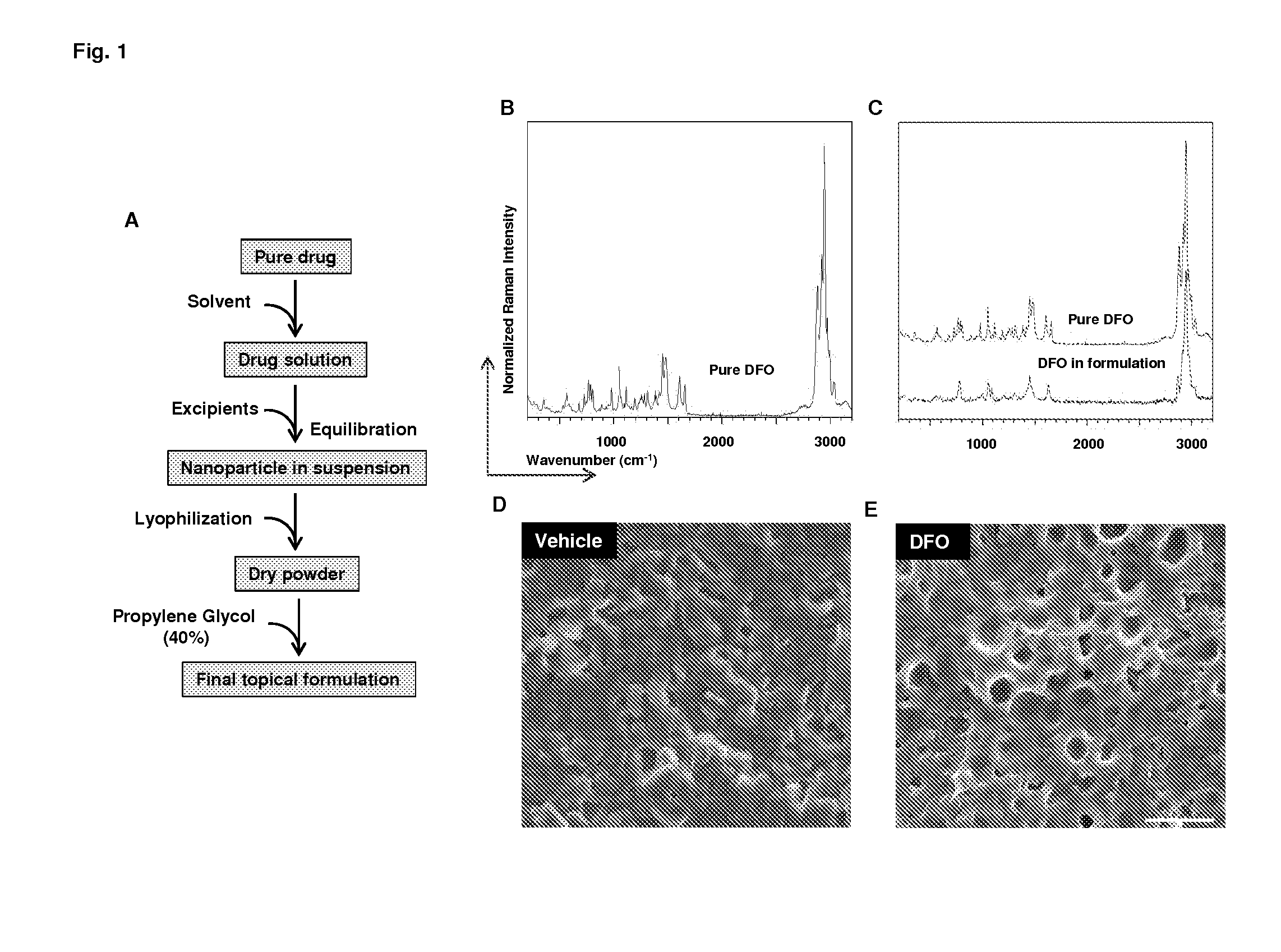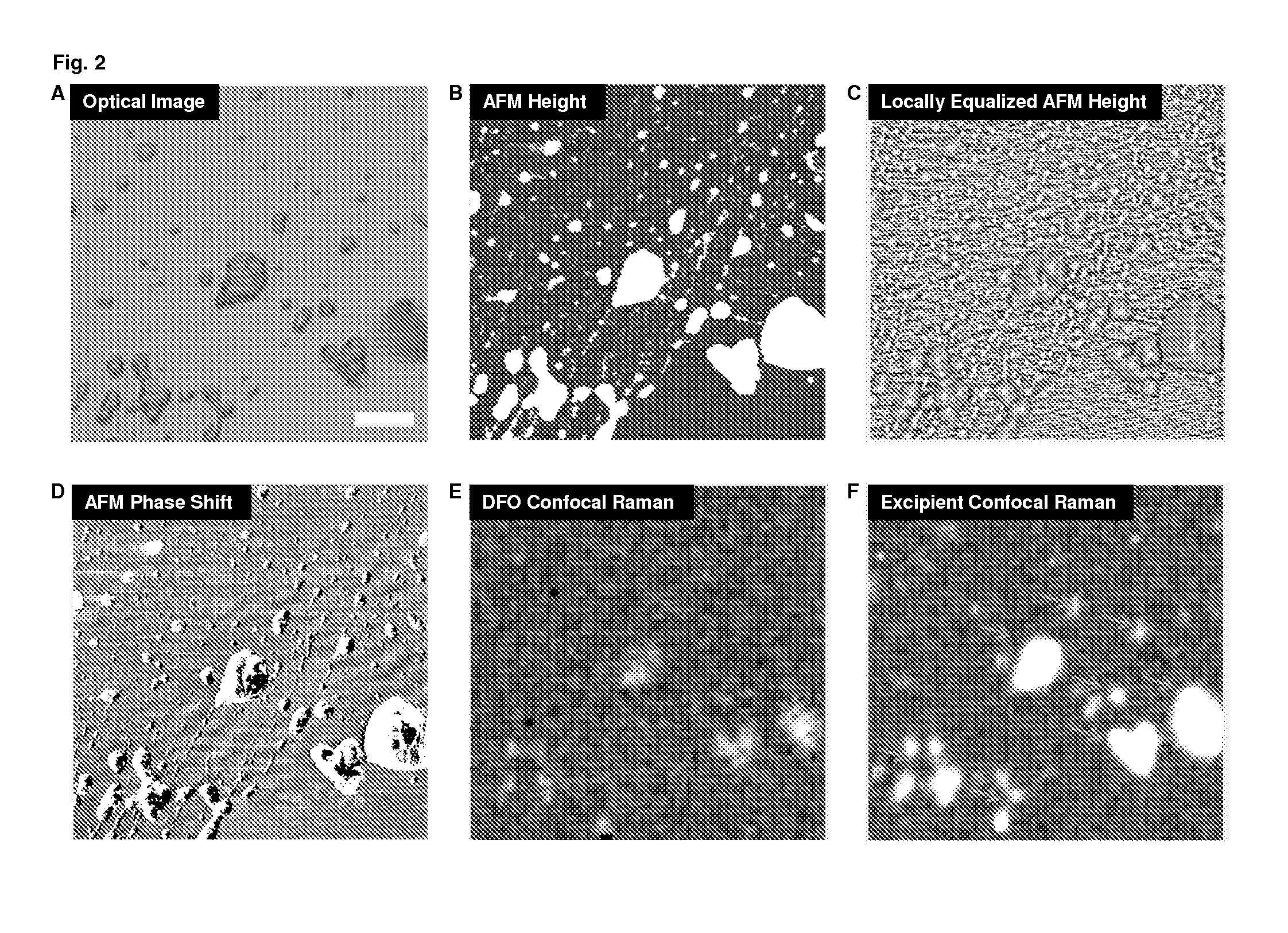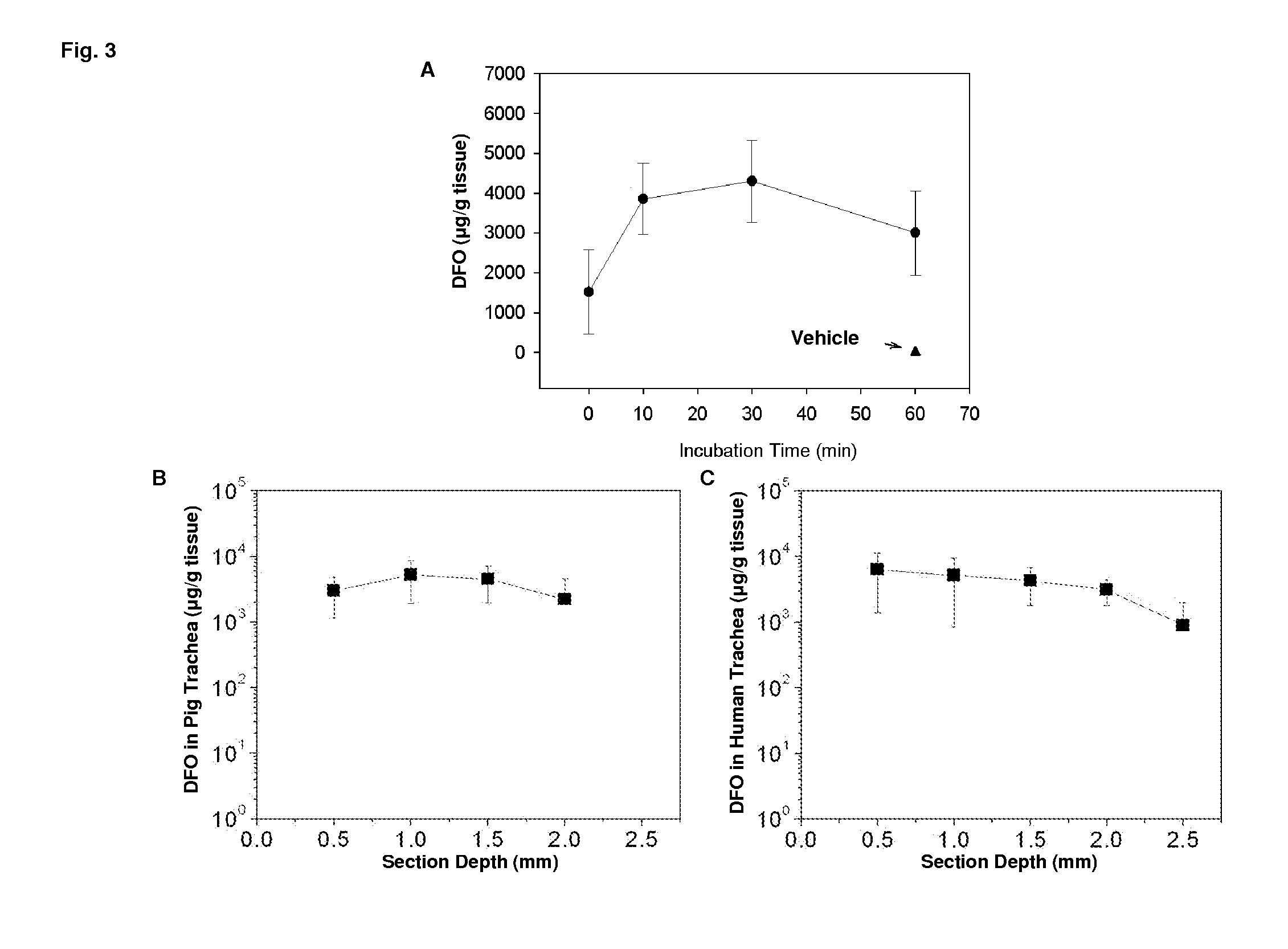HIF-1 Modulator Paint Formulation and Uses Thereof
a technology of modulator and paint, which is applied in the direction of amide active ingredients, heterocyclic compound active ingredients, biocide, etc., can solve the problems of limited lung transplantation success rate, airway complications, and source of morbidity and mortality in those patients, and achieve the effect of improving the function of a solid organ transplan
- Summary
- Abstract
- Description
- Claims
- Application Information
AI Technical Summary
Benefits of technology
Problems solved by technology
Method used
Image
Examples
example 2
Prolonged Transplant Survival by HIF-α Stabilizing Iron Chelator Formulations
[0104]We have made nanoparticles dispersed in oil that is compatible with tracheal tissue. Nanoparticles were formed by the emulsion of drug in labrafac. The emulsion was stabilized by adding lecithin, chitosan, proalbumin, PVP and poloxamer. Stabilized solution was cryo-frozen and lyophilized to obtain the nanoparticles. The particles were suspended in labrafac lipophile to obtain the chelator formulation. Compositions and methods used in developing the chelator formulations are given below.
example 3
Deferoxamine and Deferasirox Nanocapsule Formulations
[0105]
DFO 1:CDEFABPolaxamer-188Chitosan-5KLabrafacPVP-10KDFOLecithin(0.5% Aq.)(0.5% Aq.CC(40% Aq.)%19.7519.7519.751.2329.639.88mg 200200200 (40 ml)12.5 (2.5 ml)300100(2.5 ml)
[0106]DFO nanocapsules were prepared by a series mixing steps under stirring and bath sonication conditions followed by deep freezing and freeze drying. Briefly, 200 mg of DFO, 200 mg of lecithin and 300 mg of labrafac lipophile were mixed to form a first mixture; then 40 mL of 0.5% aqueous solution of Polaxamer-188 were added to form a first homogeneous liquid; 2.5 mL of 0.5% aqueous solution of chitosan-5K were added to form a second homogeneous liquid followed by adding 2.5 mL of 40% aqueous solution of PVP-10K to form a final homogeneous liquid. The final homogeneous liquid was freeze dried to obtain dry nanocapsules.
BLA1:CDEFABPolaxamer-188Chitosan-5KLabrafacPVP-10KDFOLecithin(0.5% Aq.)(0.5% Aq.CC(40% Aq.)%024.6224.621.5436.9212.31mg 0200200 (40 ml)12.5 (...
example 4
Chelator Formulations
[0112]To prepare DFO or DFX nanoparticle formulation, 1 g of DFO(X), BLA(X) and DFX (X) nanoparticles prepared as above were mixed well with 9 g of labrafac lipophile (Gattefosse SAS) with a stirring rod in a weighing boat and then the mixture was transferred into a 20 mL of plastic tube, followed by vortexing.
[0113]Administration of the formulation significantly increases airway microvascular perfusion during early times following transplantation. Since the vascular health is predictive for the health of the transplant, these data strongly suggest that this topical formulation is beneficial for the long term health of the transplant.
[0114]DFO formulation was administered around the donor trachea, the blood perfusion unit was measured 3 days following transplantation. Results are shown in FIG. 1.
PUM
| Property | Measurement | Unit |
|---|---|---|
| diameter | aaaaa | aaaaa |
| diameter | aaaaa | aaaaa |
| particle size | aaaaa | aaaaa |
Abstract
Description
Claims
Application Information
 Login to View More
Login to View More - R&D
- Intellectual Property
- Life Sciences
- Materials
- Tech Scout
- Unparalleled Data Quality
- Higher Quality Content
- 60% Fewer Hallucinations
Browse by: Latest US Patents, China's latest patents, Technical Efficacy Thesaurus, Application Domain, Technology Topic, Popular Technical Reports.
© 2025 PatSnap. All rights reserved.Legal|Privacy policy|Modern Slavery Act Transparency Statement|Sitemap|About US| Contact US: help@patsnap.com



